Family : Labridae

Text © Giuseppe Mazza

English translation by Mario Beltramini
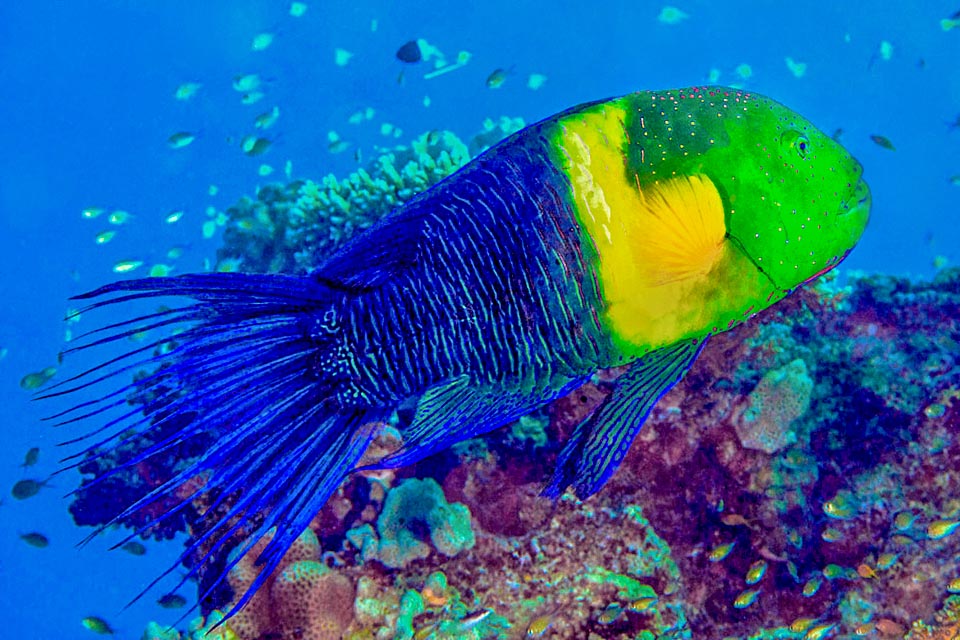
Relatively rare, with populations of 1-3 specimens per hectare, the Broomtail wrasse (Cheilinus lunulatus) lives in the Red Sea and adjacent areas of the Indian Ocean © François Libert
The Broomtail wrasse, Cheilinus lunulatus (Forsskål, 1775), belongs to the class of the Actinopterygii, the ray-finned fishes, to the order Perciformes and to the family of Labridae, rich of about 70 genera and 500 species.
The etymology of the genus comes from the Greek “cheilos” = lip, with reference to the big jaws.
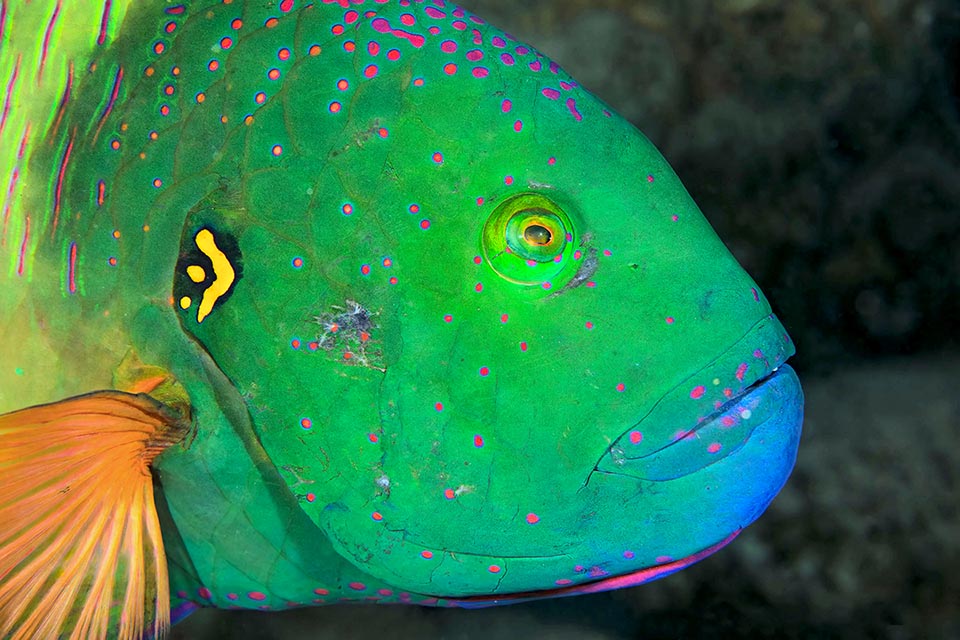
The livery varies a lot but is recognizable in all growth phases by the small golden crescent drawing close to the operculum © Maurizio Lanini
The name of the species comes from the Latin “lunula”, the small crescent-shaped buckle decorating the footwear of the senators. Our fish, which has a very variable livery, has in fact always one close to the operculum.
Zoogeography
It is a species localized in the Red Sea and adjacent zones of the Indian Ocean, from the Gulf of Aden and the coasts of Somalia up to the Gulf of Oman. Southward, it reaches the Seychelles. It is a relatively rare fish with a density of population of 1-3 specimens per hectare.
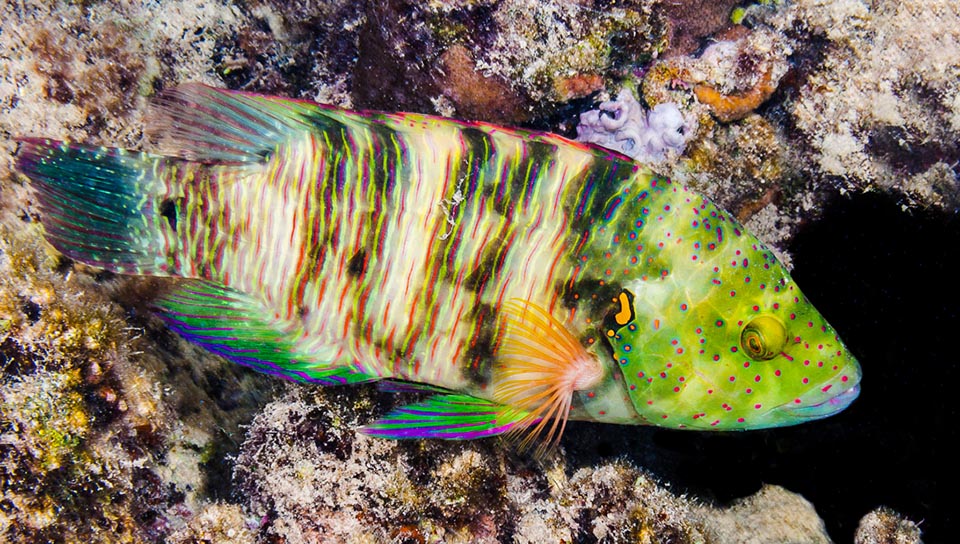
This is the female initial phase. In fact this is a protogynous hermaphrodite species with females that, growing, may transform in males © François Libert
Ecology-Habitat
It lives in shallow waters, but also at 30 m of depth on the outer side of the reefs. It is often going around on the sandy bottoms, at the limit of the madreporic formations, in the prairies of submerged grasslands looking for shells it crushes easily, like a nutcracker.
Morpho-physiology
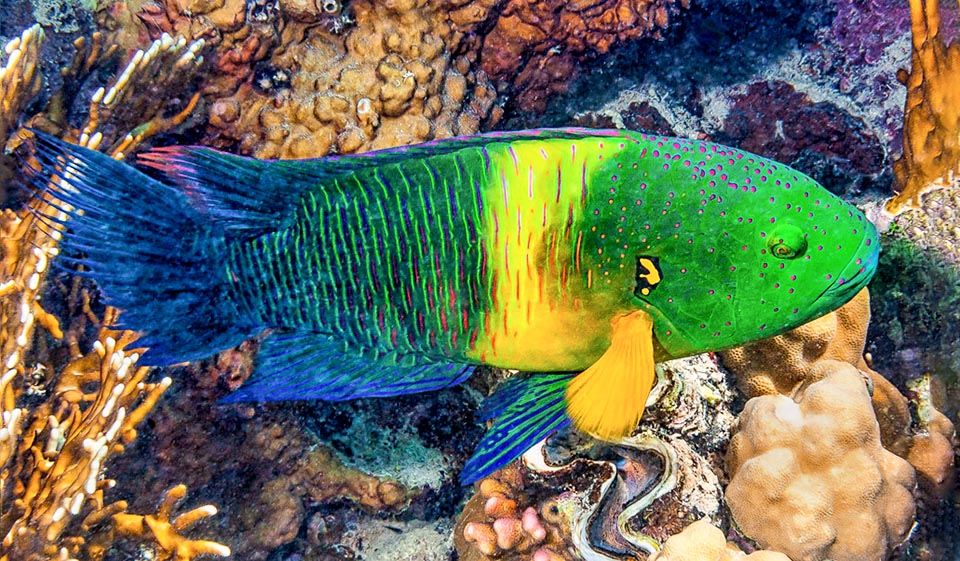
These have brighter colours, the blue fringed tail and often a vertical mimetic yellow band which visually breaks the fish in two © François Libert
High and flat, it reaches the 50 cm of length. It leaps immediately to the eye due to the characteristic vertical profile of the head and the unusual fringe of the caudal fin, evidenced in various languages as having a fan-shaped tail or broom-shaped.
Except the aforementioned golden buckle on black ground, the livery is really indescribable. The juveniles and the females, which have paler colours, show some dark brown vertical bands on a pale background and greenish head with red small dots, present also in the males which often show a pale band, often yellow like the pectoral fins, delimiting the second part of the body which is bluish.
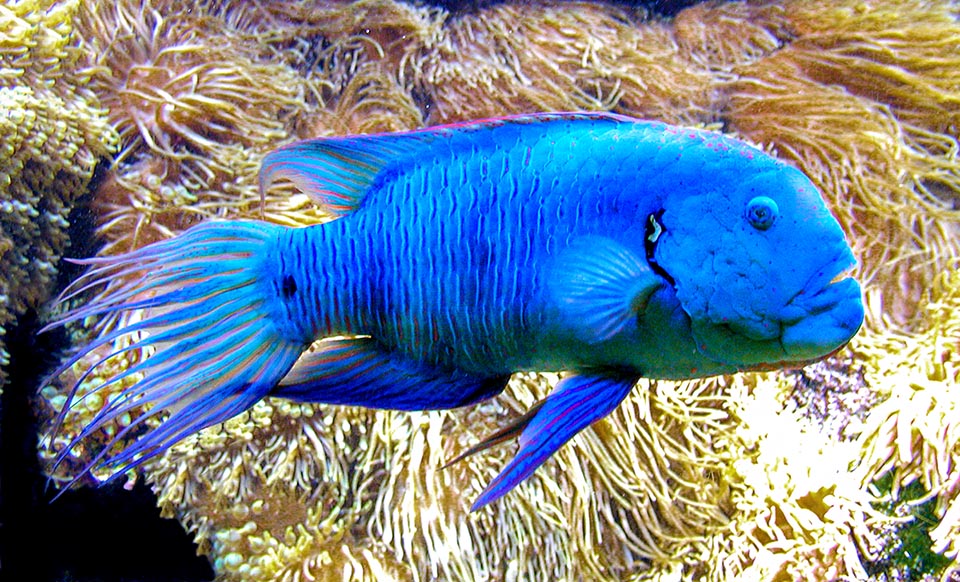
They reach 50 cm of length, living alone or with a small harem of 4-8 females, and there are also wholly blue specimens, often present in the large public aquaria © Giuseppe Mazza
But there are also specimens where the blue colour extends practically all over the body, as the one shown, and almost always we note a black spot at the base of the caudal peduncle.
Ethology-Reproductive Biology
It nourishes of benthic animals, mainly molluscs, but also of crustaceans.
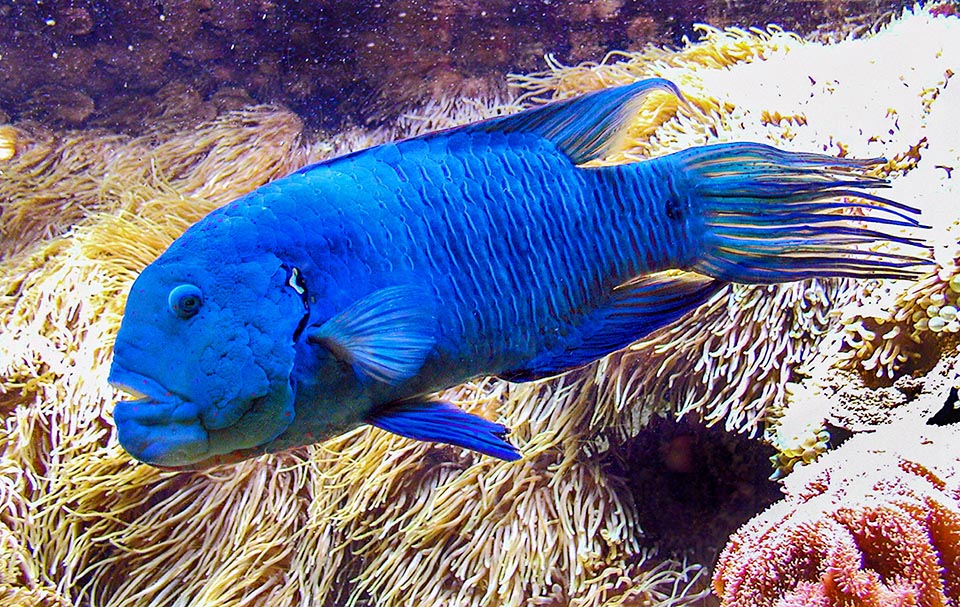
But, due to the size and the good flesh, more than by fish traffickers, Cheilinus lunulatus is localmente threatened by the fishermen and unfortunately often runs into nets © Giuseppe Mazza
It lives alone or in small groups of 4-8 individuals headed by a big male. As often is the case in the world of the wrasses, it is a protogynous, hermaphrodite species, with females that, while growing, can transform into males. The fecundated eggs are entrusted to the currents and the young have a life expectancy of almost 20 years.
Even if it is a species often present in the great public aquaria, it is not endangered by the aquaria market but rather by the fishing industry, because, seen the size and the excellent flesh, often ends up on the tables of the locals.
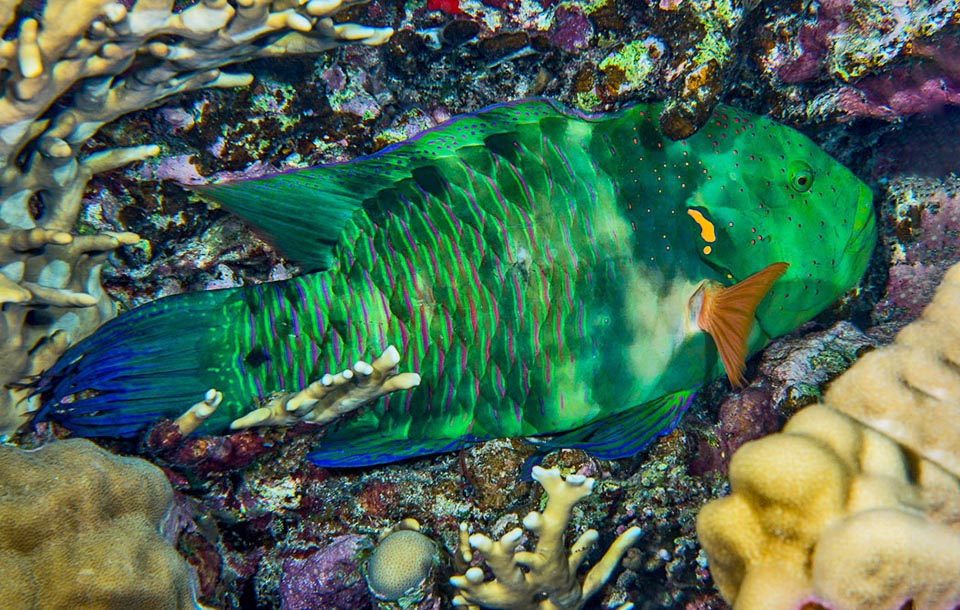
This is an adult male surprised sleeping with its night mimetic livery. The look is quite different, but it keeps the small golden drawing that has given name to the species © François Libert
Precise information about resilience and vulnerability of the species do not exist, classified as “Least Concern” in the IUCN Red List, but due to its poor density and the quite modest range it is anyway to be surveyed.
Synonyms
Labrus lunulatus Forsskål, 1775.
→ For general information about FISH please click here.
→ For general information about BONY FISH please click here
→ For general information about CARTILAGINOUS FISH please click here.
→ To appreciate the BIODIVERSITY of BONY FISH please click here.
→ To appreciate the BIODIVERSITY of CARTILAGINOUS FISH please click here.
